Research Reports
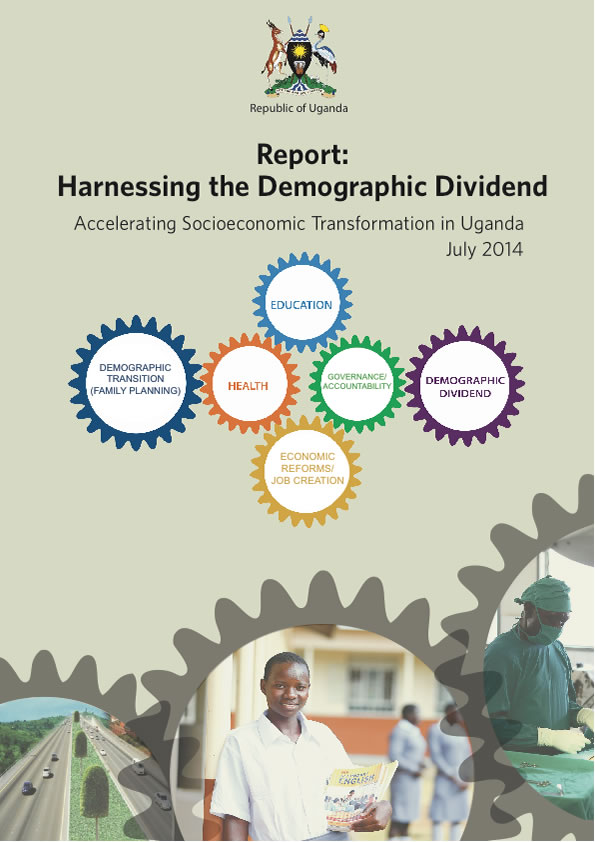
Over the past three decades, child mortality has declined steadily while fertility rates have remained high in Uganda. This imbalance has resulted in rapid population growth and a youthful population with a high child-dependency ratio. The population has grown from 9.5 million in 1969 to 35.3 million in 2013, and according to UN projections, will grow to 83 million by 2040. Because high fertility has persisted for a long time, the population of Uganda has inbuilt high momentum to continue growing for at least another century.
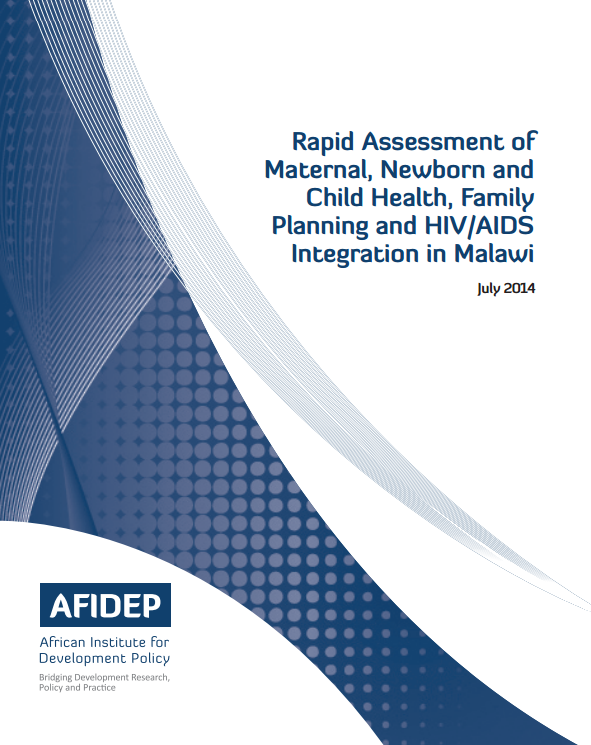
The high burden of disease and death relating to HIV/AIDS, unintended pregnancies and poor maternal, newborn and child health (MNCH) remain a major health challenge in Malawi, as is the case in most of sub-Saharan Africa (SSA). This is largely a result of a weak health system resulting in low demand for and utilisation of health care services. Malawi is a country with strong political will and a learning and cooperative culture for working with development partners and adopting proven lessons for improving health services.
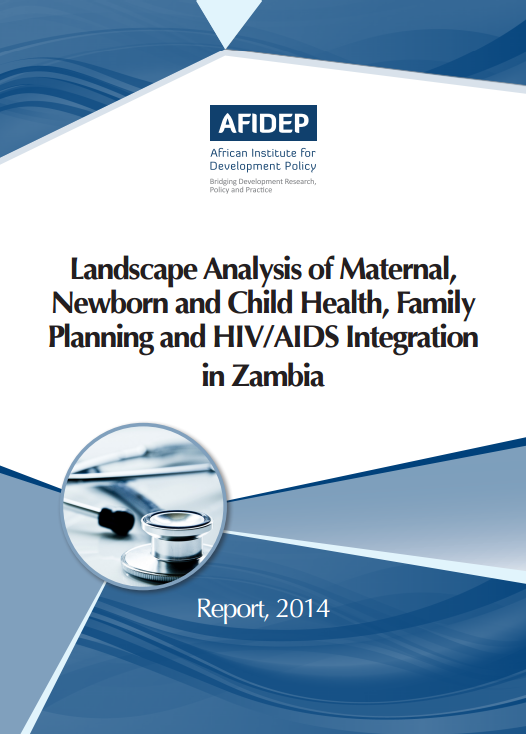
The sub-Saharan Africa (SSA) region faces numerous health challenges, including a high burden of disease relating to HIV/AIDS, unintended pregnancies and poor maternal, newborn and child health (MNCH). This is largely a result of weak health systems compounded by a low demand for, and utilisation of, health care services in the region.

A report following the OASIS Conference (Organizing to Advance Solutions in the Sahel) hosted by the University of California, Berkeley and African Institute for Development Policy in Berkeley on September 21, 2012.

A few countries in Eastern and Southern Africa – namely Ethiopia, Malawi, and Rwanda – have demonstrated a new wave of optimism and made good progress in addressing barriers of access to modern contraception over the past decade or so. Further, progress in contraceptive use in Kenya and Tanzania stalled in the 1990s, but both countries have recently demonstrated potential for recovery and good progress. The aim of this study was to explore the origin, architecture and role of political will in contributing to these largely unexpected successes.
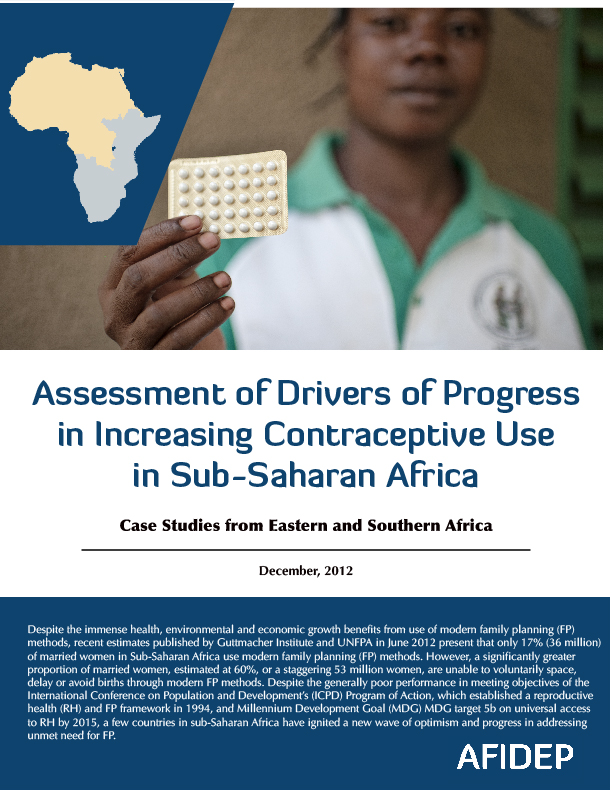
Despite the immense health, environmental and economic growth benefits from use of modern family planning (FP) methods, recent estimates published by Guttmacher Institute and UNFPA in June 2012 present that only 17% (36 million) of married women in Sub-Saharan Africa use modern family planning (FP) methods. However, a significantly greater proportion of married women, estimated at 60%, or a staggering 53 million women, are unable to voluntarily space, delay or avoid births through modern FP methods.
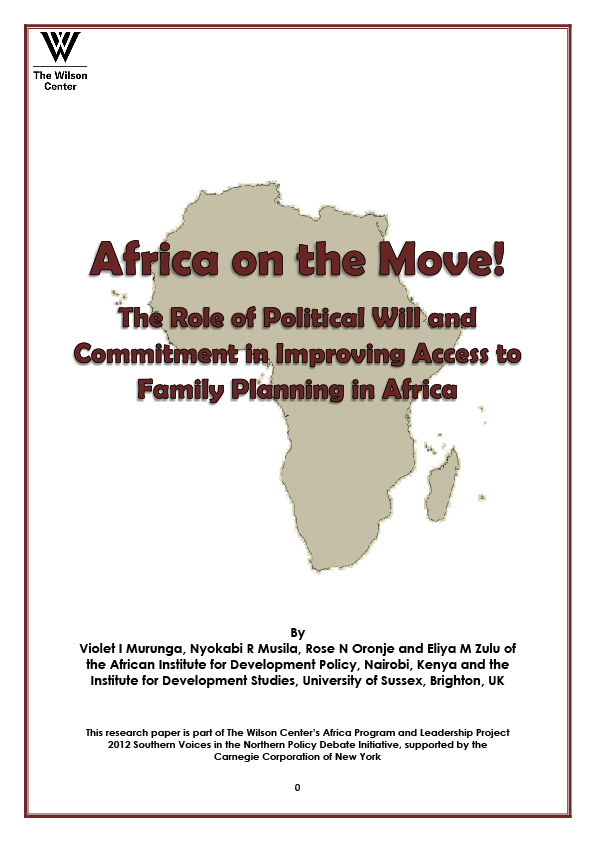
Despite commitments to the program of action for the 1994 International Conference on Population and Development (ICPD) and MDG 5 (focused on maternal and reproductive health), little progress has been made in improving access to family planning and slowing rapid population growth in Africa. Lack of political will has been highlighted among the key factors behind the lacklustre performance in addressing these ‘sensitive’ development issues.
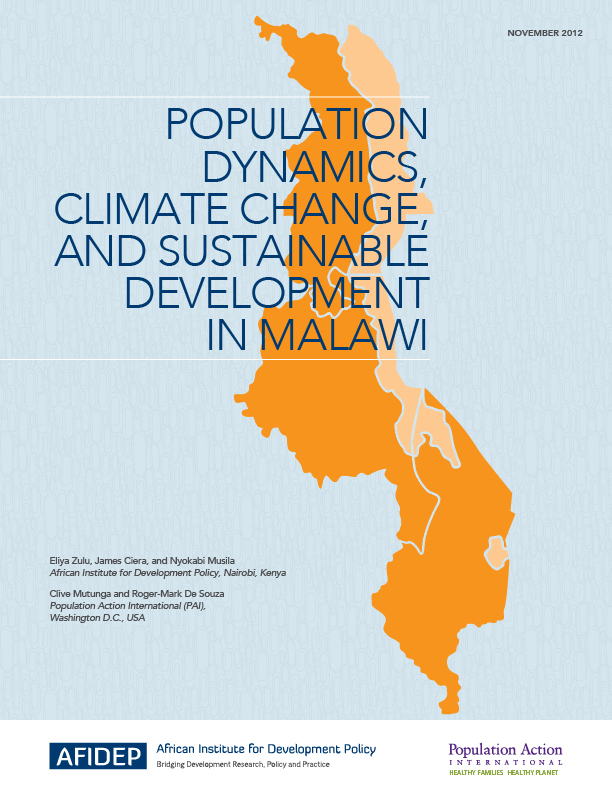
Malawi’s long-term development strategy, Vision 2020, is operationalized through five-year medium-term strategies. The primary objective of the 2011-2016 Malawi Growth and Development Strategy (MGDS II) is to enhance wealth creation and reduction of poverty through sustainable economic growth and infrastructure development. The MGDS II recognises that population dynamics and climate change influence all aspects of sustainable development, and calls for concerted efforts to address these issues in order for the country to achieve its development objectives.
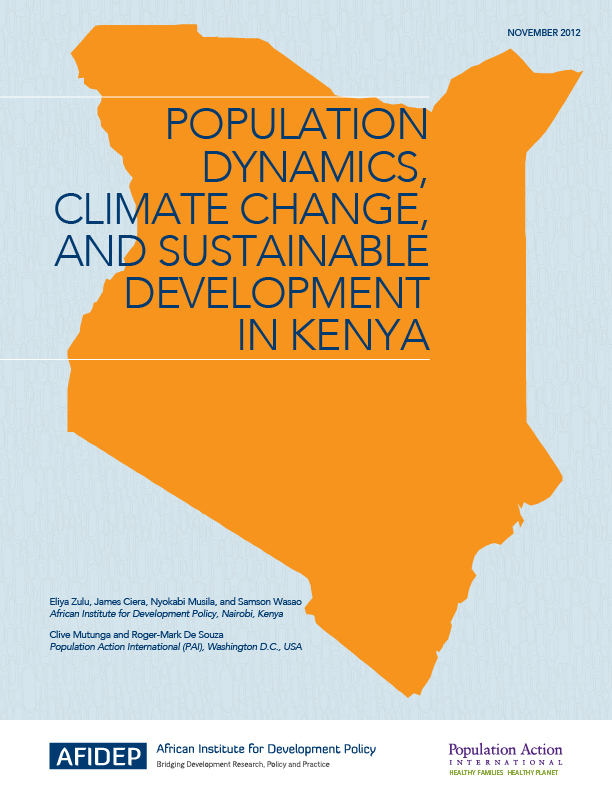
This report by the AFIDEP and Population Action International (PAI) presents a timely assessment of the role of population dynamics and climate change in sustainable development in Kenya. It is based on sound analysis of the issues, utilizing the most up-to-date data, which is complemented by a policy and programme assessment, and informed by the views of key policy makers and implementers from government, development practice, and civil society
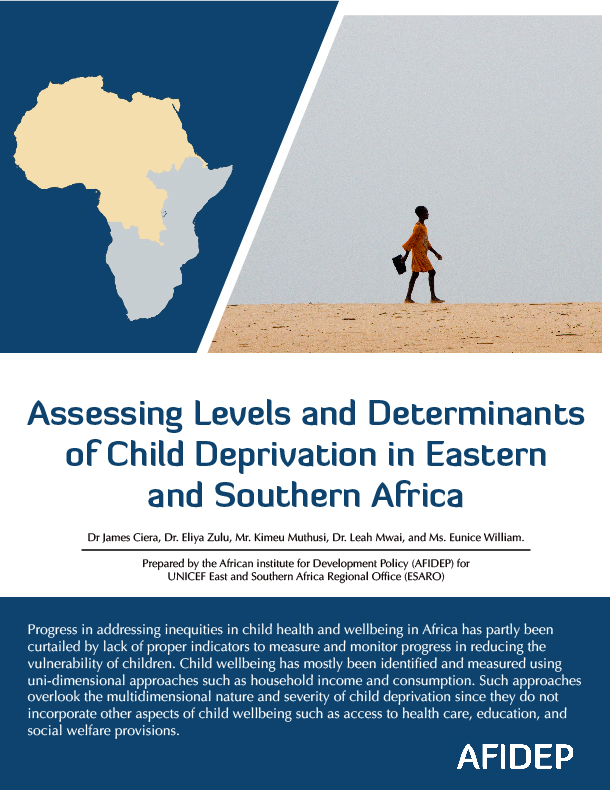
Progress in addressing inequities in child health and wellbeing in Africa has partly been curtailed by lack of proper indicators to measure and monitor progress in reducing the vulnerability of children. Child wellbeing has mostly been identified and measured using uni-dimensional approaches such as household income and consumption. Such approaches overlook the multidimensional nature and severity of child deprivation since they do not incorporate other aspects of child wellbeing such as access to health care, education, and social welfare provisions.
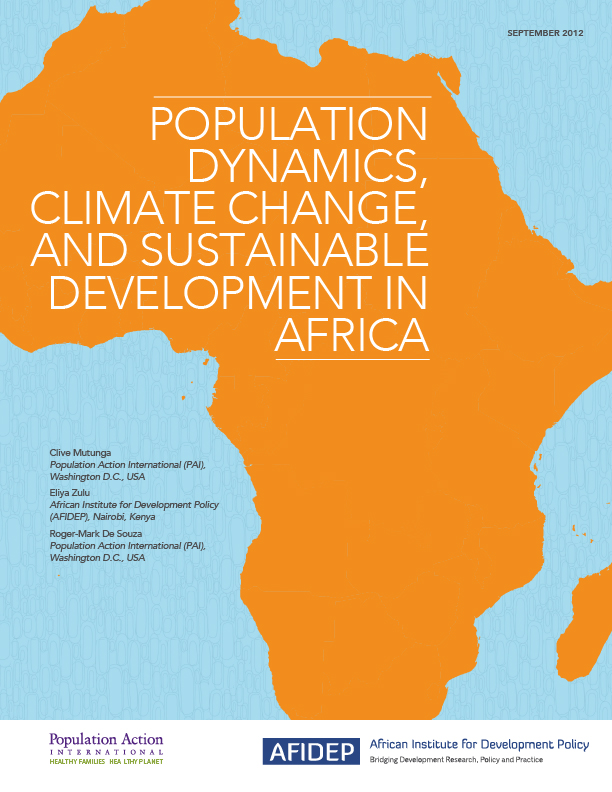
A region’s population dynamics, including the size, distribution and composition of its population, influence its prospects for sustainable development. Virtually all development policies in Sub-Saharan Africa (SSA) cite the region’s rapid population growth, urbanisation, and age structure as major challenges. These pressures hurt efforts to reduce poverty, ensure food security, preserve the environment, and improve education, employment, and health.

